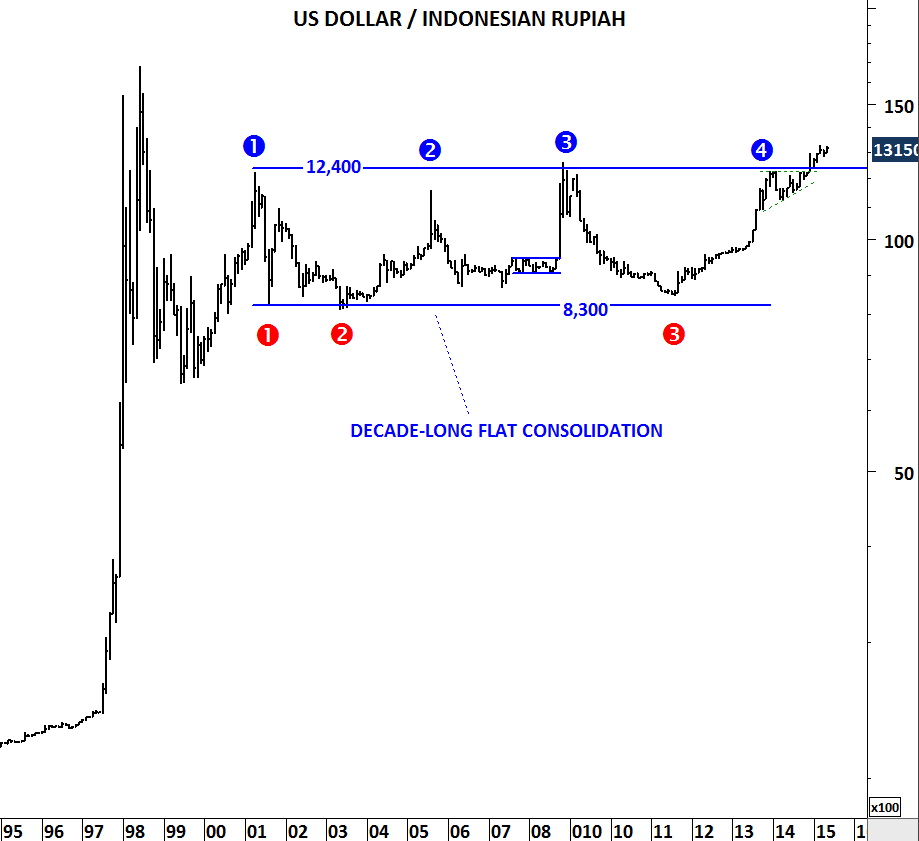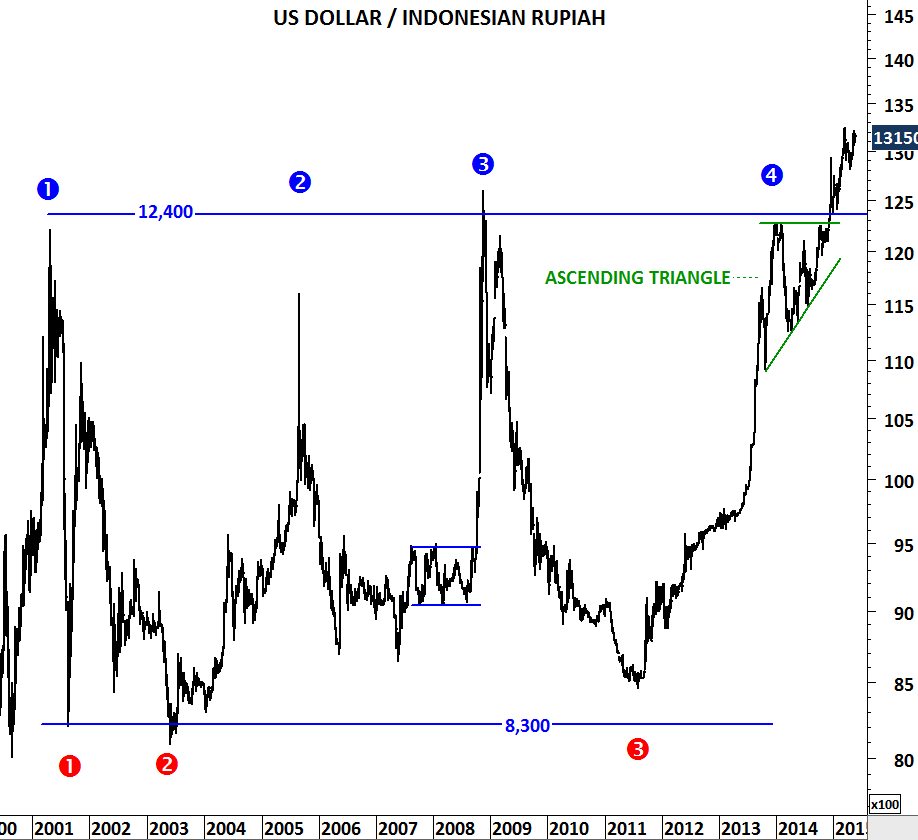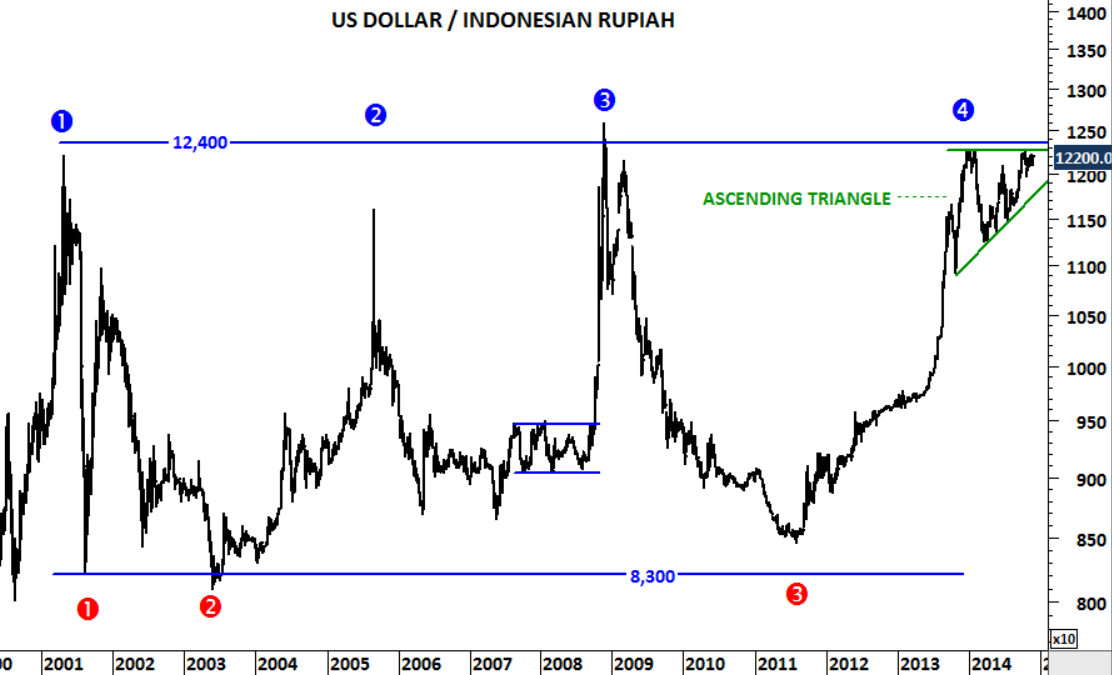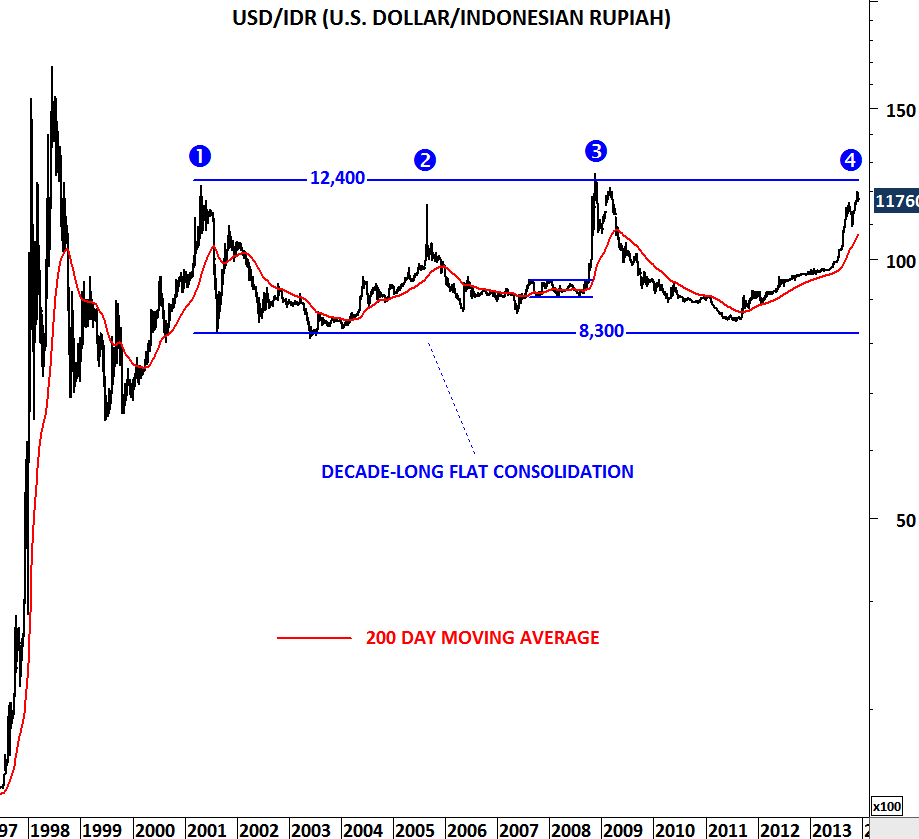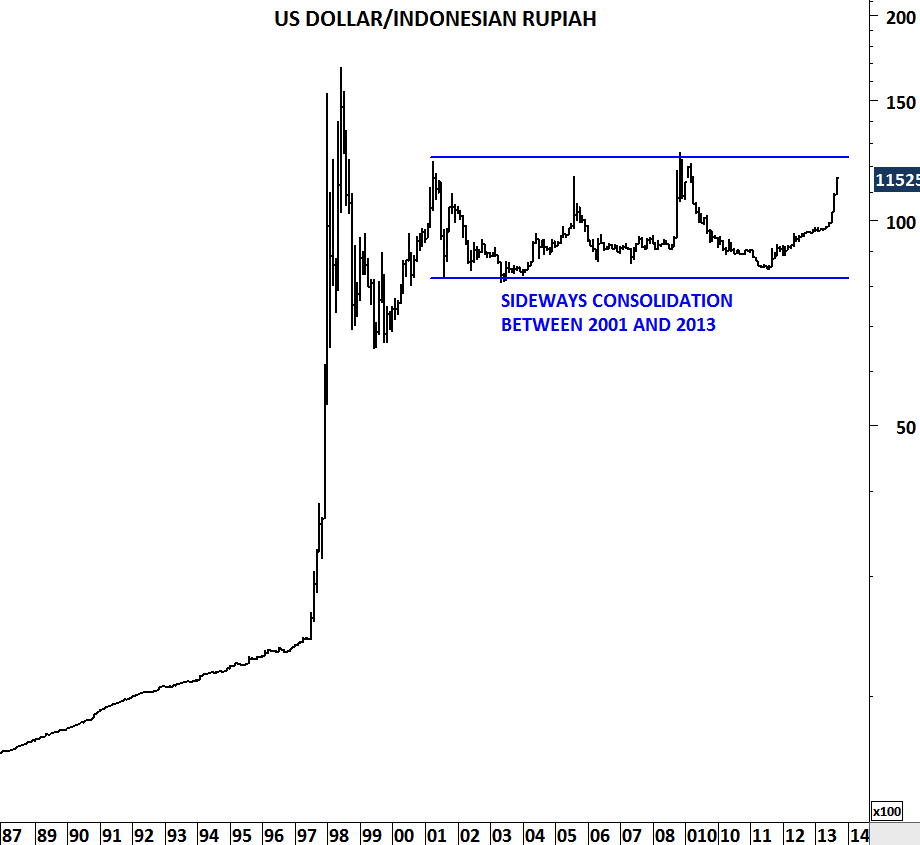US DOLLAR/INDONESIAN RUPIAH
U.S. dollar remains strong against major cross rates. U.S. dollar strength is a long-term theme and it’s here to stay in the coming months. The most vulnerable group is the emerging market currencies. We have seen significant weakness in emerging market currencies over the past year. Long-term charts suggest further weakness for the emerging market currencies.
From the EM group Indonesian Rupiah is exposed to sharp depreciation. USD/IDR is breaking out of a decade-long horizontal consolidation. Breakout from long-term chart patterns are usually followed by strong trend periods. In the last quarter of 2014, USD/IDR broke above 12,400 levels – strong resistance since 2001. As long as the cross rate remains above 12,400, we will expect higher levels in the coming months.

